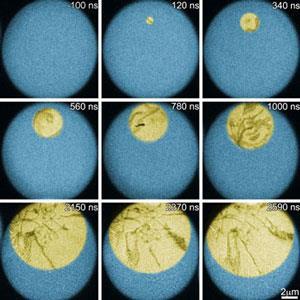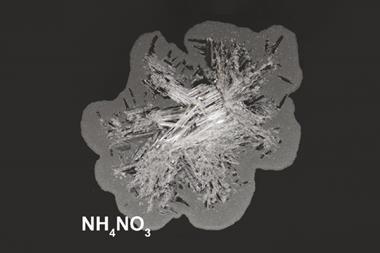
Germanium telluride is a phase-change material (PCM), which rapidly changes from an amorphous to a crystalline state when heated. PCMs are often found in memory devices, where laser or current pulses cause them to switch from amorphous to crystalline states and change their electrical properties. A good understanding of PCM crystallisation kinetics is important to improve speed and functionality of these devices, and now there is a way to directly observe these speedy reactions.
Melissa Santala and colleagues at the Lawrence Livermore National Laboratory in California used dynamic transmission electron microscopy to capture the process, which occurs on the nanosecond timescale. The technique works by emitting rapid, high-current electron pulses over a period of several microseconds to take multiple images of the reaction as it is happening. The team have already used their ‘movies’ to calculate the speed of germanium telluride crystal growth at high temperature, and are planning to use the same methods to study similar materials.







No comments yet